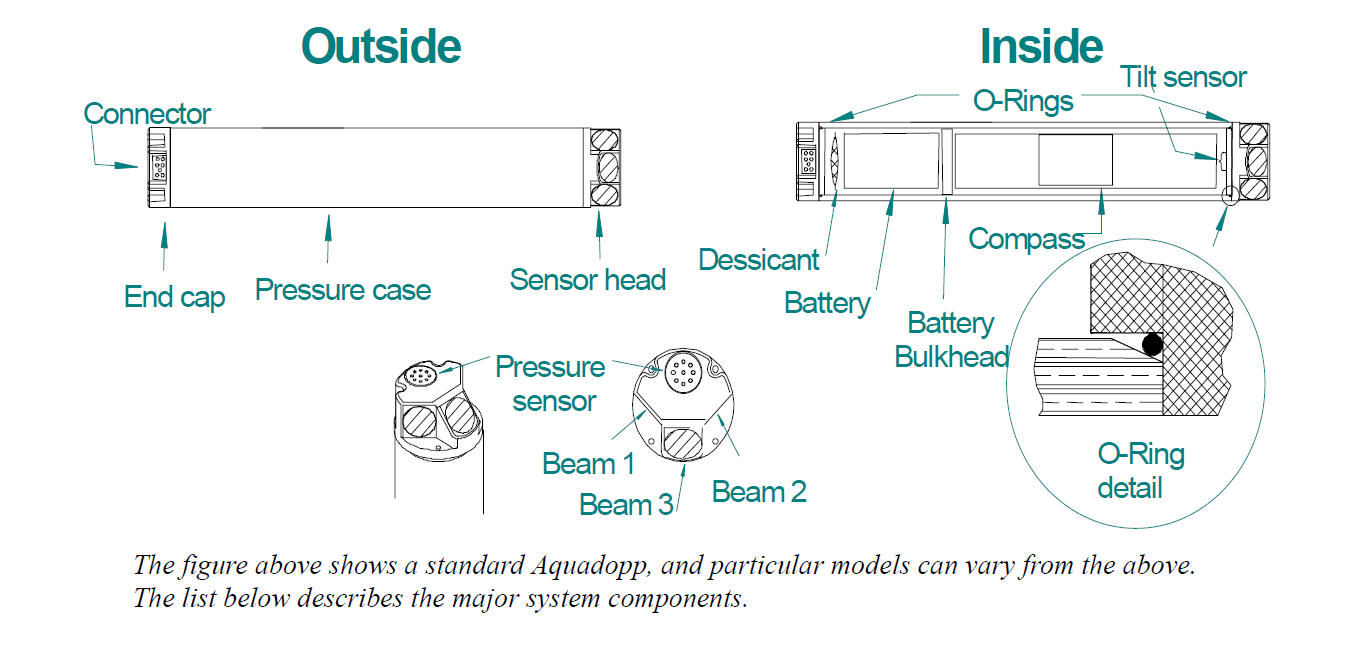Acoustic Current Meters
Acoustic Current Meter Components
Aquadopp Current Meters use the Doppler effect to measure current velocities in the ocean environment. The instrument transmits a short pulse of sound, and then listens to its echo to measure the change in pitch or frequency. The change in pitch can determine the velocity of the current. The following diagram shows the major components of an Acoustic Current Meter:
- Sensor Head contains 3 acoustic transducers, a tilt sensor, a temperature sensor and a pressure sensor.
- Tilt Sensor is located on a small daughter board attached to the sensor head. Aquadopp tilt sensors are designed for vertical orientation, but tilt sensors can be mounted at right angles for operating in horizontal orientation. Tilt sensors can be inverted 180 degrees, pointing up or down.
- Temperature Sensor is located internally on the sensor head.
- Pressure Sensor is located on the sensor head.
- Compass measures the earth's magnetic field. Together with the tilt sensor, the compass is able to obtain a heading for the Aquadopp.
Regional Circulation Moorings (RCM)
The NEPTUNE Regional Network has four Regional Circulation Moorings (RCM) that measure currents within the axial rift valley of Endeavour Ridge at the regional scale, and gauge the effect of hydrothermal venting on regional currents. Each mooring is comprised of three types of instruments including Acoustic Current Meters, CTDs, and Acoustic Doppler Current Profilers (ADCP). These instruments are fixed to a cable at various depths above the seafloor bottom, and measure the current velocity in 3 dimensions and physical properties such as temperature and salinity. The top of the cable is lifted by a large buoy which keeps the line vertical at all times.

1 Comment
Dwight Owens
Discuss NEPTUNE Canada's acoustic current meters (click Add Comment below.)